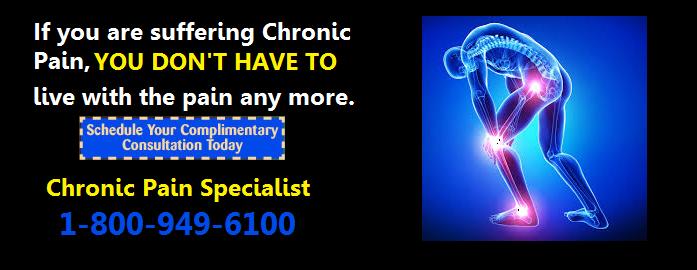Chronic Pain Therapy
Physical therapy is a healing art and science that helps individuals by decreasing pain and restoring function. A complete neuro-musculoskeletal evaluation for each person leads to the development of therapy goals and a treatment plan.
Initial treatment includes techniques to alleviate pain. This symptom relief is followed by exercise and joint and soft-tissue manipulation to restore normal movement. To help you understand the injuries and treatment, we have explained the types of manual therapy, physical medicine modalities, pain management and electro diagnostic studies that you may come across as you are treating in our office.
Manual Therapy:
- Myofascial Release is a technique used to stretch fascia. Fascia is the interwoven connective tissue that surrounds our muscles and organs, and when we experience physical trauma, scarring or inflammation, the fascia may become tight and restricted causing pain and restriction of motion. This hands-on therapeutic stretching helps to reduce pain and restore motion by releasing restriction of the injured fascia and restore its function.
Physical Medicine Modalities:
lce/Cryotherapy
- Cold packs are applied to the area of pain and inflammation where cold is transferred to the patient’s skin, muscle and tissue which reduces the inflammation and decreases pain and swelling.
Heat Pack
- Moist heat packs are used to relax tight muscles causing tissues to relax, which decreases pain caused by muscle tension or spasm, and allows for more effective stretching and mobilization.
Ultrasound
- Ultrasound uses high frequency sound waves that penetrate heat into human tissue deeper than any other heat modality. This deep heat promotes muscle relaxation and circulation while helping to relieve inflammation, muscle spasm and pain.
Electrical Stimulation
- Electrical stimulation uses an electrical current to cause a single muscle or group of muscles to contract, which helps relax or strengthen the affected muscle and promotes blood supply to the area(s), which assists in healing.
Traction
- Therapeutic spinal traction uses manual or mechanical tension created by a gentle pulling force to stretch and mobilize the spine to help increase the space between vertebrae and relieve nerve compression, pain and spasm.
Paraffin Baths
- Paraffin is soothing moist heat to warm joints, tissue and skin. Paraffin is ideal for the treatment of patients suffering from pain associated with arthritis, strains, joint stiffness, and it’s also used to increase range of motion.
- Trigger Point Injection (TPI) is used to treat painful areas of muscle. When muscles do not relax, they tighten or knot, causing spasm. These knots/spasms of muscle are called a trigger point, which may irritate the surrounding nerves causing pain to be felt in another part of the body. This
knots/spasms of muscle are called a trigger point, which may irritate the surrounding nerves causing pain to be felt in another part of the body. This is also known as referred pain. Using a small needle, a local anesthetic is injected into the trigger point, which inactivates the trigger point and alleviates the pain.
Prolotherapy
- Prolotherapy, which is also known as nonsurgical ligament reconstruction, is a treatment useful for many different types of musculoskeletal pain.
When a tendon or ligament is stretched, due to trauma overuse, it becomes pain sensitive. This type of injection stimulates the tissue to repair itself, thus tightening the stretched ligament or tendon and making it stronger.
- Epidural Steroid Injection (ESI) is a common nonsurgical procedure used to treat pain caused by spinal nerve irritation. The ESI delivers a long lasting steroid medication and a local anesthetic to the epidural space reducing inflammation or swelling of the nerves.
 Electro Diagnostic Studies (EMG and NCS)
Electro Diagnostic Studies (EMG and NCS)
- Electromyography(EMG) and Nerve Conduction Studies(NCS) are used to study their nerves and muscles, which help physicians arrive at a diagnosis. There are two parts to these studies. Nerve conduction studies will measure the health of the nerve by applying small electrical impulses to the nerves, measuring the speed and intensity of electrical signals that travel along those nerves. During the EMG, a small thin needle is inserted into specific muscles, one at a time, a1;1d visual and auditory information is collected through the electrical signals that travel from needle to the EMG machine. This test usually takes 30-60 minutes and normal activities can resume after the test.
Looking for a physician that specializes in chronic pain therapy in the NYC,Brooklyn, Bronx, Queens, and Long Island metropolitan area call 1800-949-6100 for a physician that specializes in chronic pain therapy in your area.
Neighborhoods with pain medicine physicians include:
Manhattan Chelsea East Village Gramercy Park Greenwich Village Hamilton Heights Harlem Hell’s Kitchen Lower East Side Lower Manhattan Midtown East/Sutton Pl. Midtown West Morningside Heights Murray Hill NoHo/NoLIta SoHo TriBeCa Upper East Side Upper West Side Washington Heights West Village.
Brooklyn Boerum Hill Brooklyn Hts Carroll Gardens Clinton Hill Cobble Hill DUMBO Fort Greene Greenpoint Kennsington Park Slope Prospect Heights Red Hook Williamsburg Windsor Terrace.
The Bronx:
–Riverdale, Kingsbridge, Woodlawn, Norwood, Bedford Park, Fordham.
–Tremont, University Heights, Morris Heights, Morrisania, Melrose, Hunts Point, Port Morris, Mott Haven, Highbridge.
–Soundview, Castle Hill, Westchester Square, Parkchester, West Farms.
–Throgs Neck, Pelham Bay, Pelham Parkway, Morris Park, City Island.
–Wakefield, Eastchester, Edenwald, Williamsbridge, Baychester
Queens Astoria and LIC
Get Your Life Back With Chronic Pain Therapy: 1-800-949-6100 Find A Pain Physician in New York


